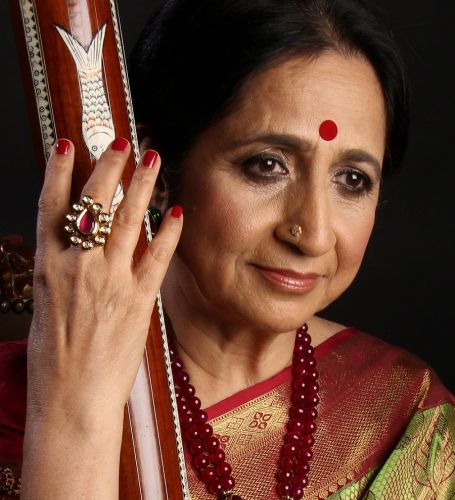Impulse and Pulse
-

By: Hema Iyer Ramani
Almost 20 years back, as I was performing for a ‘mid-year series’ concert at the Narada Gana Sabha, I sang an abhang (devotional poetry sung in praise of Vitthala) on an impulse: ‘Theertha Vitthala’. I hadn’t anticipated overwhelming response to it. It was a success and soon, on popular demand, I had to include an abhang in every concert from then on,” says Aruna Sairam, the carnatic vocalist who has been chosen for this year’s Sangitha Kalanidhi Award, conferred by Madras Music Academy.
Abhangs were an integral part of her learning during her growing-up years in Mumbai. From the classical renderings of Bhimsen Joshi to the Warkali sampradaya to abhangs that were sung by porters travelling by the local trains, she imbibed the spirit entrenched in these compositions. This distinctive style of singing that she introduced to the carnatic repertoire soon came to be her signature element.
Aruna Sairam was recently in the city as part of Panchamnishad’s annual music series ‘Bolava Vitthal’, whose focus was abhangs. She weaved parallel excerpts of bhakti poetry, like divyaprabandam & devarnama, and abhangs.
Surround soundAruna grew up in a household where her parents loved music and allied arts. Her father Sethuraman wrote music-based articles, and her mother Rajalakshmi was a musician and a teacher. It was but natural that her mother thus became her first teacher. As their home was filled with the sound of music, it was but natural that Aruna hopped from one music lesson to another. There were two constant listeners at her home — Radha & Krishna. Vitthala’s presence thus engulfed her.
Aruna’s love for travel encouraged her to pick up languages — she can converse in Tamil, Hindi, Gujarathi, Marathi, English, and has a working knowledge of French.
She collaborated with the medieval music practitioner Dominique Vellard and the music that emerged from the collaboration was one that was based on the deep understanding of their love for music.
The Sethuraman household played host to many an artiste — musicians, harikatha practitioners, dancers. It was thus that she came under the tutelage of T Brinda. She even enjoyed listening to Balasaraswathi, the doyen of abhinaya in bharatanatyam.
Aruna’s gurus were giants who came from distinguished paramparas — A S Mani (from Tiger Varadachari school) taught her the art of kalpanaswara, K S Narayanaswamy delved into the subtleties of raga expositions, and so on. Armed thus with the knowledge, Aruna had the task of taking it forward and adding a flavour to it to make it her own.
Bring in changeIn the mid-90s, she started bringing about reforms in her cutcheri format — she introduced oothukadu songs through a journey of viruttam, delivered with powerful energy, good diction, and bhava. Her Kalinga Tillana is a case in point. The audience loved it. Soon, she also included abhangs, “the regular.”
Aruna proved her prowess in the area of composing, too. Her pallavis were known for their originality. She took the concert hall by storm when she rendered Ragam Tanam Pallavi, where she included in her pallavi the mukudas of Tyagaraja, Shyama Shastry and Dikshitar. A pallavi with different talams would prove the virtuosity of the maestro, some raga-juggling would hold the interest of the audience. But she did not want it to be too dry, but she was keen on a storyline. So she included five...
“Aruna proved her prowess in the area of composing, too. Her pallavis were known for their originality.”
Aruna’s ascent on the musical firmament has earned her accolades and awards.Notable among them are the Padma Shri and the Sangeet Natak Akademi award. She is currently Vice Chairman of the Central Sangeet Natak Akademi. The recent announcement of the Sangeetha Kalanidhi award is a true feather in her cap.

 Photos
Photos